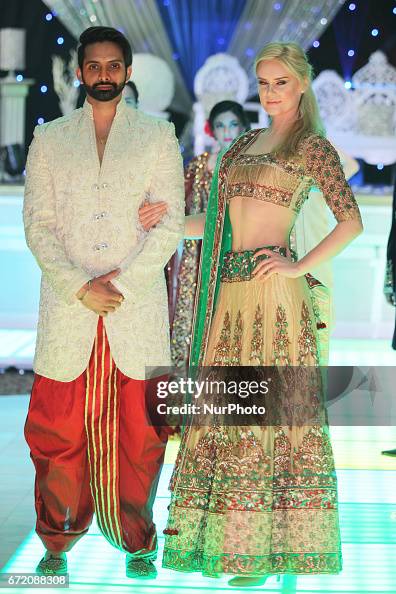Cheery Period Style: Eastern Wear Pakistan Styles for Every Occasion
Cheery Period Style: Eastern Wear Pakistan Styles for Every Occasion
Blog Article
Revealing the Rich Heritage of Eastern Style
Exploring the detailed tapestry of Eastern fashion introduces a world where practice fulfills technology, and workmanship intertwines with cultural importance. From the opulent silks of old empires to the elaborate needlework of nomadic tribes, each garment tells a tale that goes beyond time and borders, echoing the abundant heritage and imaginative legacy of the East. As we peel off back the layers of background and tradition, an interesting journey waits for, unraveling the tricks behind the exciting attraction and enduring influence of Eastern style on the international phase.
Origin of Eastern Fashion

In Mesopotamia, for example, the Sumerians and Babylonians developed garments using woollen, natural leather, and linen, adorned with elaborate patterns and precious jewelry. Ancient Egyptians are renowned for their sophisticated weaving abilities and using lightweight, breathable materials like bed linen. Chinese fashion stressed the importance of shade significance and detailed embroidery techniques, while Indian garments included lively hues, luxurious materials like silk and cotton, and sophisticated drape designs such as the saree.
These old worlds not only influenced each various other yet also led the way for the varied and culturally rich tapestry that is contemporary Eastern fashion. Through centuries of development, Eastern style proceeds to prosper, blending tradition with contemporary influences to produce classic and unique designs.
Social Impacts and Customs
Drawing from centuries-old personalizeds and ideas, social influences and traditions play a critical role fit the significance of Eastern fashion (eastern wear pakistan). The rich tapestry of societies throughout Eastern areas such as Asia, the Middle East, and Africa has greatly influenced the clothes styles, shades, materials, and develops that are widespread in Eastern style today
In countries like India, Japan, and China, traditional garments like sarees, kimonos, and cheongsams continue to hold substantial cultural importance and are usually decorated with elaborate needlework or symbolic patterns that show deep-rooted ideas and values. In Center Eastern nations, the moving abayas and kaftans worn by guys and ladies not just serve as small outfit yet also mirror the region's social heritage and Islamic customs.
Additionally, using certain shades like red for great luck in Chinese society or intricate geometric patterns influenced by Islamic architecture even more exemplify exactly how social influences materialize in Eastern style - eastern wear pakistan. By honoring and protecting these social influences and traditions, Eastern fashion remains to advance while staying true to its abundant heritage
Advancement of Eastern Clothing
Over time, Eastern garments have undertaken significant changes, mirroring a mix of tradition and modernity in their style and design. Typical Eastern garments such as the saree, salwar, bathrobe, and hanbok kameez have actually evolved to integrate contemporary aspects while maintaining their social significance.
One notable development is making use of innovative materials and methods in Eastern garment building and construction. Typical handwoven textiles like silk and cotton have been matched with contemporary products such as polyester and blends, using raised sturdiness and convenience of treatment. In addition, advancements in printing technologies have enabled intricate patterns and designs to be incorporated into Eastern garments with precision and detail.
Additionally, adjustments in shape and tailoring have modernized Eastern attire, making them more versatile and ideal for varied occasions. Traditional outfit codes have actually kicked back, enabling for testing with shades, embellishments, and designs. This advancement has not just made Eastern garments much more enticing and easily accessible to a worldwide audience yet has likewise ensured their proceeded relevance in modern fashion landscapes.
Symbolism in Eastern Attire
Discovering the ingrained cultural relevance woven into Eastern clothing unveils a rich tapestry of meaning and practice. Eastern garments are frequently imbued with signs that useful site mirror the user's social status, religious beliefs, and cultural identity.
In addition, specific garments hold symbolic meanings. The robe site here in Japan, for circumstances, signifies respect, tradition, and formality. Its design, fabric, and even the way it is used all bring deep cultural value. Similarly, the saree in India represents grace, beauty, and the rich heritage of the country. The draping design of the saree differs throughout areas and celebrations, each bring its very own symbolic significance.

Influence of Eastern Style Today

The unification of Eastern aspects in Western style has actually caused a blend of styles that satisfy diverse tastes and preferences (eastern wear pakistan). Designers commonly attract ideas from Eastern textiles, patterns, and shapes, developing one-of-a-kind and cutting-edge items that mix standard and contemporary aesthetics. This cross-cultural exchange has not just renewed the style market however also fostered a much deeper admiration for Eastern heritage and workmanship
Additionally, the rise of digital platforms and social media has better intensified the effect of Eastern fashion, permitting brand names and developers to reach a bigger target market and showcase their social heritage to the world. Through collaborations, style shows, and online projects, Eastern fashion proceeds to grow and progress in today's interconnected and vibrant worldwide landscape.
Verdict
In verdict, the rich heritage of Eastern style is a testament to the social influences, detailed workmanship, and extensive meaning embedded in each garment. From old civilizations to contemporary interpretations, Eastern style remains to mesmerize with its unique blend of practice and advancement. The impact of find here Eastern fashion today acts as a pointer of the classic beauty and imaginative expression that have made it a worldwide sensation celebrated for its abundant cultural heritage.
Discovering the complex tapestry of Eastern fashion reveals a globe where tradition satisfies innovation, and craftsmanship links with cultural meaning.The withstanding importance and social importance installed in Eastern clothes proceed to form and influence the contemporary impact of Eastern fashion today. Eastern fashion has actually gone beyond borders, becoming a worldwide phenomenon welcomed by developers, stars, and style enthusiasts worldwide.In final thought, the abundant heritage of Eastern style is a testimony to the cultural influences, elaborate craftsmanship, and extensive importance embedded in each garment. The impact of Eastern style today serves as a pointer of the ageless style and imaginative expression that have actually made it a global phenomenon celebrated for its rich cultural heritage.
Report this page